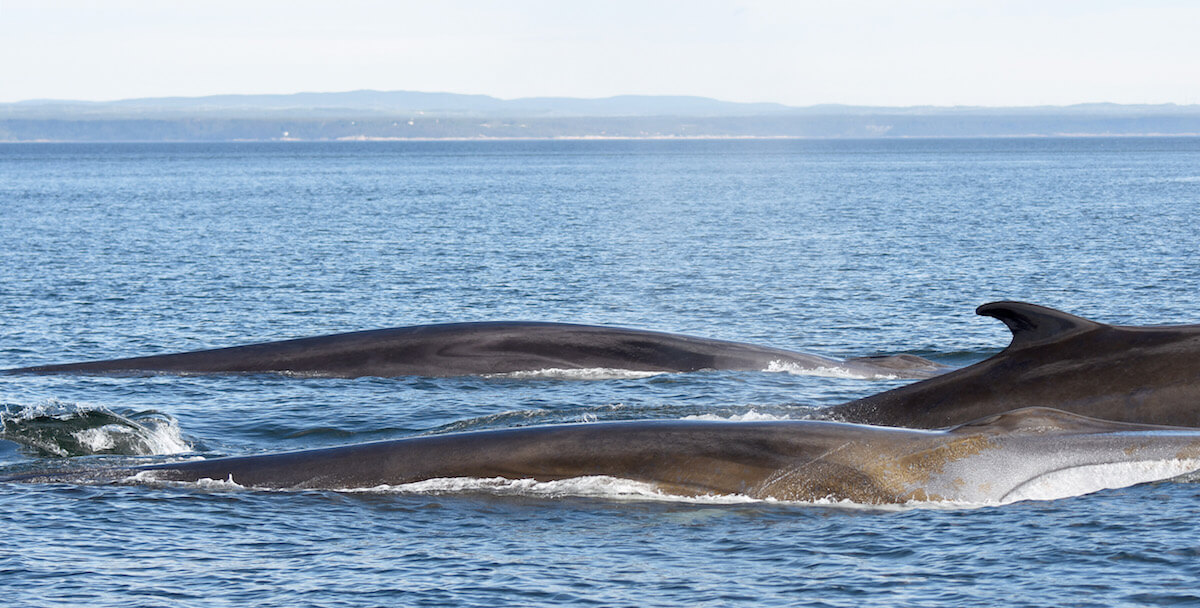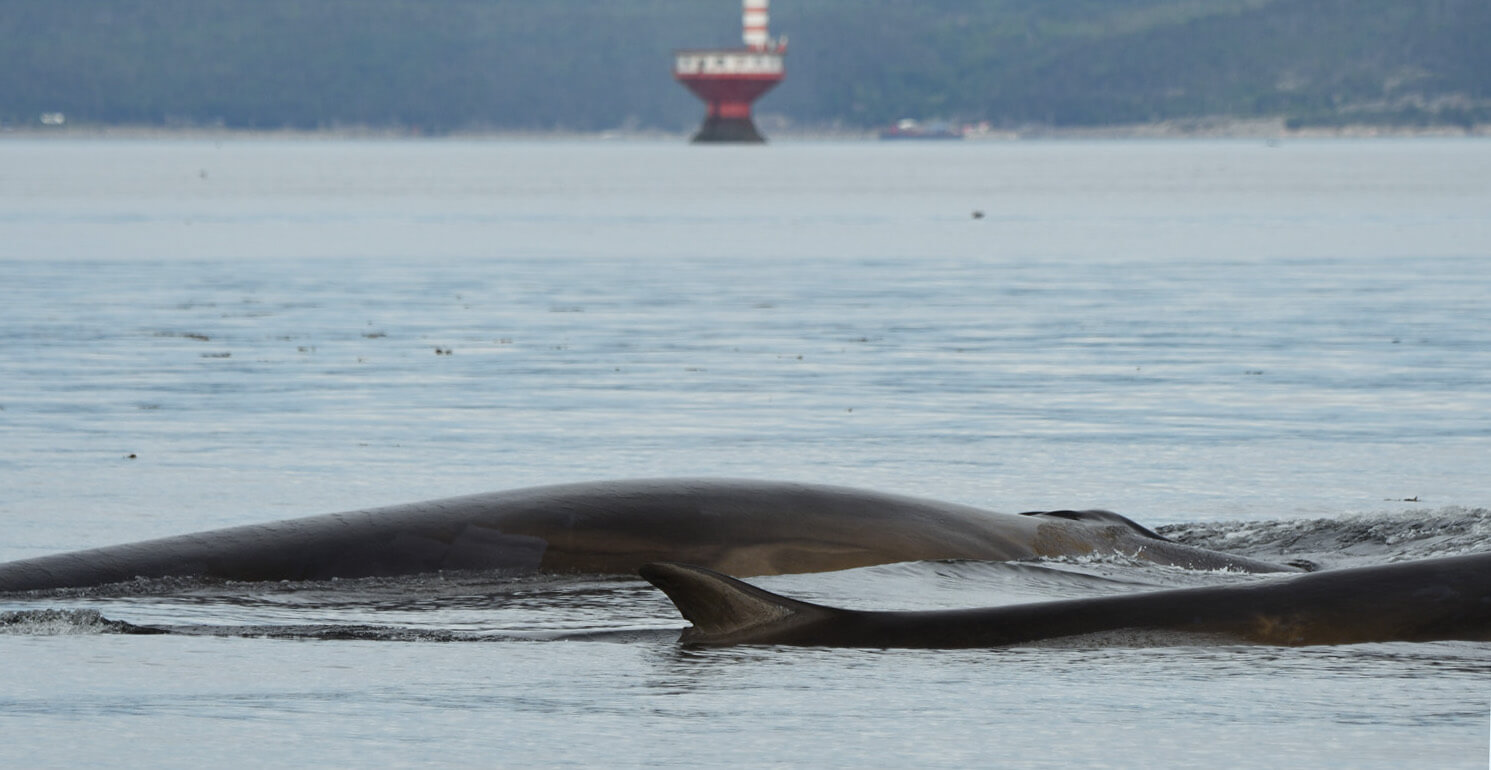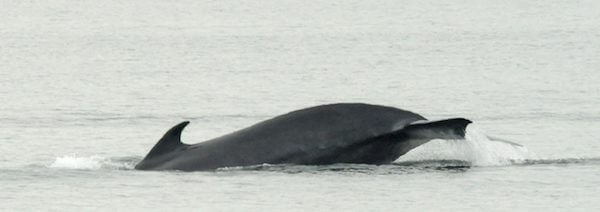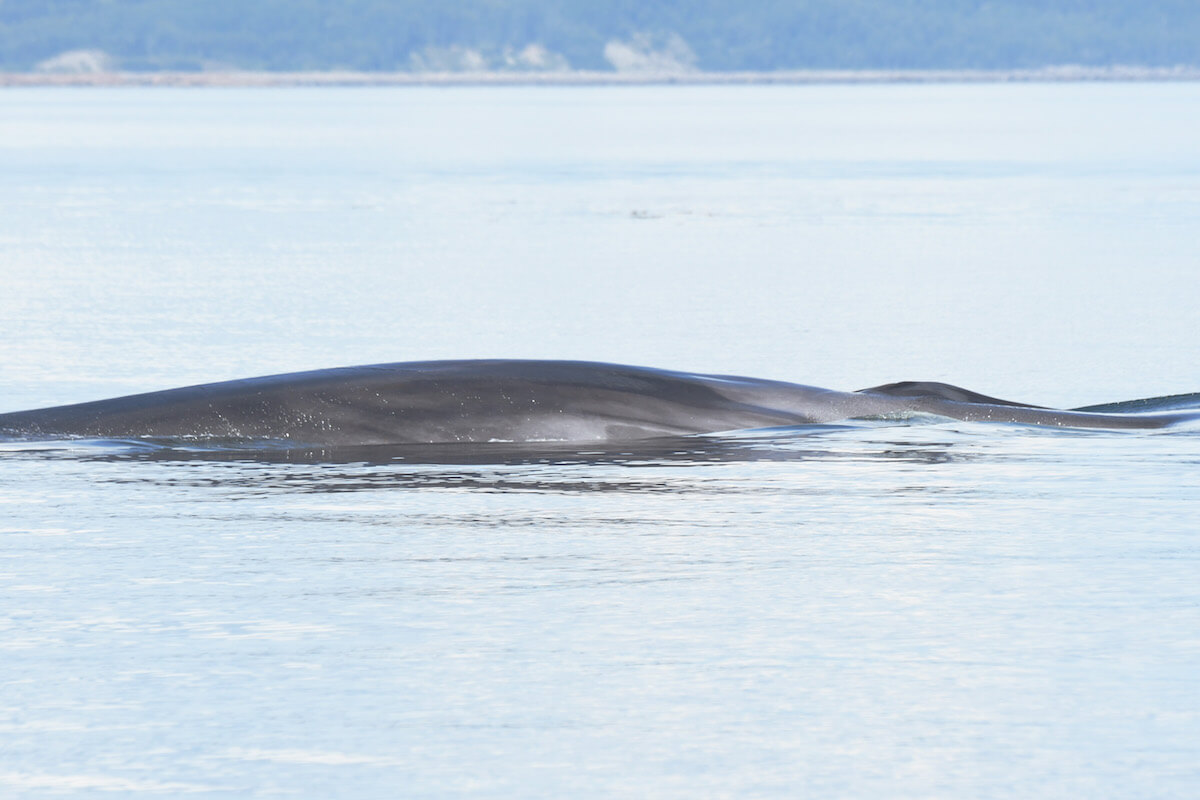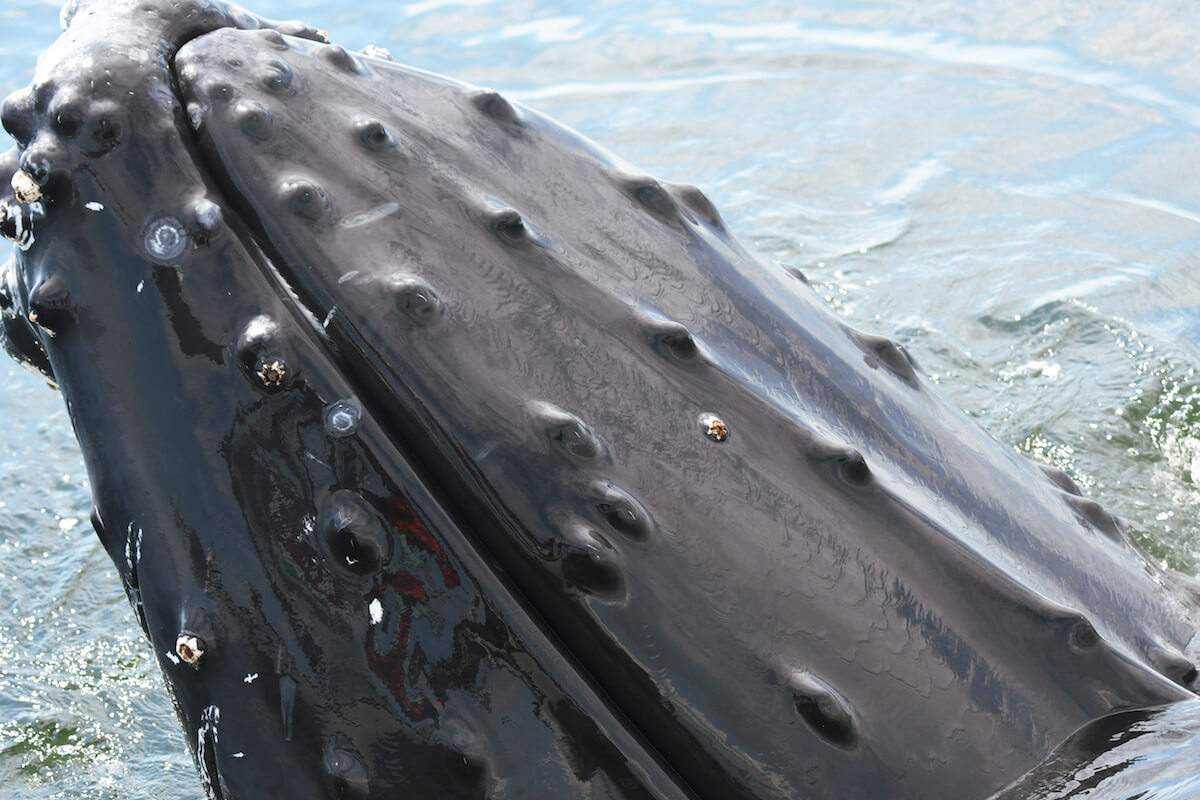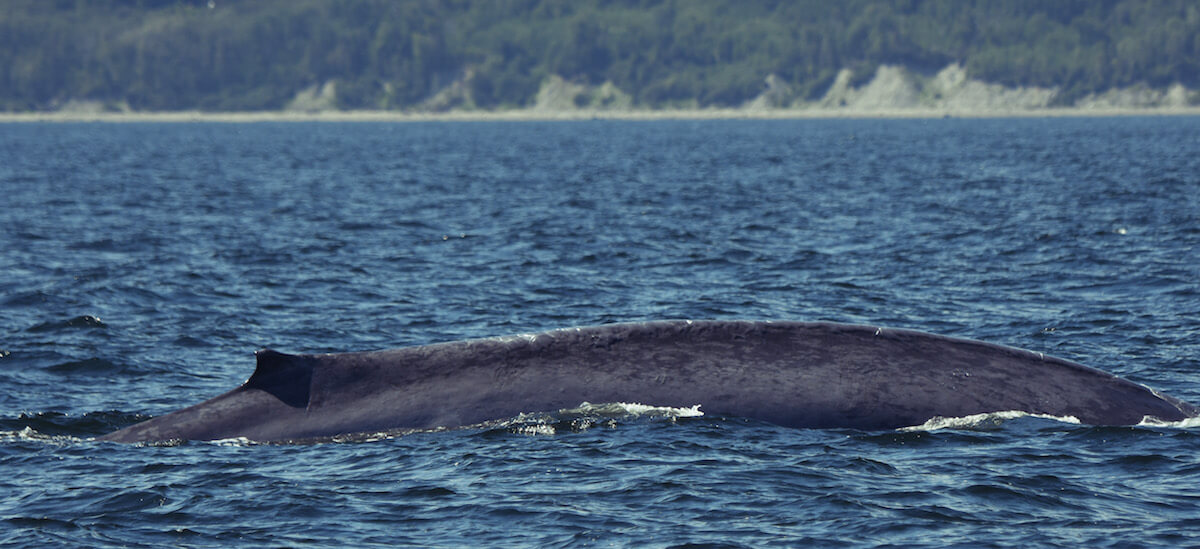What a pleasure it is to cross paths with large rorquals! This week, we encountered two blue whales, nearly a dozen humpbacks and just as many fin whales, including several individuals that our team knows well.
For years, GREMM’s research assistants had boarded whale-watching vessels operated by AML, Essipit and Les Écumeurs in order to carry out monitoring of large rorquals. This approach helped reduce the number of boats operating in proximity to the whales, limit the pressure on them and reduce monitoring costs. This year, however, we are resuming our survey activities from our inflatable research craft, the BpJAM. This allows us to comply with public health measures, cover a more extensive area and identify individuals that are sometimes less targeted by the whale-watching industry.
So on July 21 and 22, we set sail from the Tadoussac marina. We kick off our field work early so as to interfere as little as possible with sightseeing activities. Our game plan is as follows: we’ll start near the Prince Shoal Lighthouse and work our way toward Îlets Boisés off the coast of Les Escoumins. Along the way, we photograph every individual we encounter, regardless of whether it is a fin whale, a humpback or a blue whale.
On both days, the animals were well distributed throughout the course of our journey. Some individuals were swimming alone, while others were in groups of two to five.
With the fin whales
We photographed three fin whale mother-calf pairs. The first one, Bp059, a.k.a. “Trou” and her calf, have been photographed in the Saguenay-St. Lawrence Marine Park since early July. The frequency of observations of the two individuals together makes it possible to confirm their kinship without the need for genetic analysis. However, Trou’s calf has on occasion been observed without its mother and vice versa. Is it preparing to be weaned?
The second female-calf duo involved Caïman. If she were to be seen again with the calf multiple times, Caïman would officially be recognized as a four-time, and maybe even five-time mother (in 2004, she was spotted just once with a calf)! Talk about a prolific female! The other female has yet to be identified.
With the humpback whales
As for the humpbacks, Tic Tac Toe is still swimming with her calf. At the present time, she is the only humpback mother with young in the area. Humpback whales proved challenging for us this week. In order to identify them, we photograph their tails when they dive. However, the humpbacks were taking it easy, lingering very quietly on the surface and not diving. It was therefore necessary to be patient and wait until they finished resting to finally be able to snap their picture.
Story of the week
This is the first time I’ve ever seen a fin whale swimming backward. Bp059, a.k.a. “Trou”, first showed its peduncle (the part between the dorsal fin and the tail lobes), then its dorsal fin, followed by the flank and, lastly, the blowhole. It’s as if I’m playing a breathing sequence in reverse! Accompanied by her calf, this female was the only one in the quintet to swim this way. How might we explain this strange behaviour? Hard to say… In any case, Trou is a very peculiar individual. Once, in 2016, she showed her tail when she dove, an extremely rare behaviour in fin whales.
Unfortunately, I don’t have a video! The other fin whales in the group had not yet been photographed, so we concentrated instead on taking their pictures for our photo-ID work.
Preliminary identifications of the week
Some individuals present easily recognizable features and allow us to identify them on our first pass through our photos; these are called pre-identifications.
Humpback whales
Within the dozen humpbacks, we recognized…
- Chewbacca
- Gaspar (BBR)
- Tic Tac Toe and her calf
- H858 «Queen»
- H859
- H887
- H917
- H929
- H939
- H943
Fin whale
Within the dozen of fin whales sighted, we recognized…
- Bp059, a.k.a «Trou» and her calf
- Bp903
- Bp935
- Bp942, dit «Piton»
- Bp955, dit «Ti-Croche»
- Caïman and a calf
Blue whale
We identified B093!


